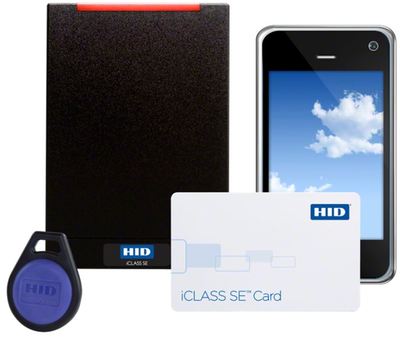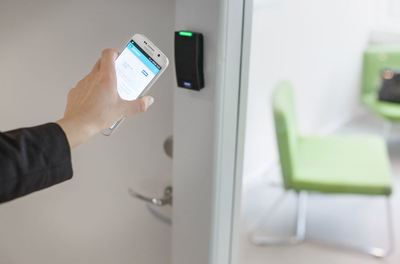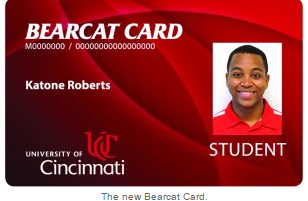|
What to do when it's time to replenish card stock
CR80News & ColorID article series continues... Every university has to manage its card stock supply, and though it's not the most exciting task for a card office to undertake, being left without a sufficient supply of cards can bring a university's card issuance to a grinding halt. Depending on the size of the institution, the type of credential, and even the time of year, replenishing card stock is more of a process than you may think. ColorID's corporate marketing manager, Mark Degan, offers his insights to better explain the factors that a university should consider when it comes time to restock. Keeping stock When it comes to card stock supplies, the first consideration for any university card office should be the amount of card stock needed to keep the operation running smoothly. "Depending on the university's orientation sizes, as well as the functions that they are using their ID cards for will help determine the amount of card stock it should keep handy," explains Degan. "I would suggest having at least six months worth of card stock in house at any given time." Housing six months worth of card stock should provide a significant cushion for a university to accomplish its average operations, but it is also important to account for potential abnormalities in card stock consumption. "A number of issues can come up that could increase your card consumption," says Degan. "The most common are large orientation classes, re-carding, card stock failure, bad batches or even an ID printer malfunctioning and requiring reprints." Degan explains that the size of the institution may also play a role in the restocking process, as larger universities do usually have a larger replenish size. Alternatively, larger universities can order more frequently rather than placing a single, larger-quantity order. Know your lead time In addition to the many operational challenges that a card office may face, another key consideration for replenishing card stock is lead time. As Degan explains, a card office must take lead time into account because delivery time frames will vary depending on the type of card stock. "Non-custom, non-technology, or blank, card stock is usually available in sleeves of 500 in a number of options and varieties," explains Degan. "For blank card stock, the standard lead time is one week, and if for some reason it isn't in stock, a new order could take up to four weeks." Next on the list is custom, non-technology card stock. "These card stock orders usually take between 2-4 weeks, but in the summer months, universities should assume 6-8 weeks," says Degan. According to Degan, non-custom, technology card stock typically comes in sleeves of 250-500 and offers a number of options and varieties. "Standard lead time for this card stock is 1-2 weeks, but if it's out of stock a university should expect 4-6 weeks for manufacturing throughout the year and 6-8 weeks during the summer months," he adds. The lengthiest lead time can typically be found with custom, technology card stock. As Degan explains, these orders routinely take around 4-6 weeks, but in the summer months can balloon up to 6-10 weeks. Despite their varying lead times, Degan does explain that the type of card stock does not affect the overall order quantity, provided the university can afford to wait for the shipment to arrive. It's for this reason that planning ahead is crucial. Time is of the essence As previously mentioned, the time of year can factor into the amount of time it takes to process an order. With this in mind, Degan offers some advice for planning ahead. "The best time of the year to order card stock is from October to April," Degan explains. "After spring comes around, and throughout the summer months, lead times always increase because some universities forget to place their orders earlier, or have just realized they opened their last box of cards." Degan places a hard deadline on a restocking order. "The absolute latest that a university card office should wait to reorder card stock is six months worth of card supply," he says. "Waiting any longer than that will result in longer lead times and could make life a little more stressful." "We send our customers emails throughout the year with accurate lead times so they can plan ahead," says Degan. "Lead times can change very rapidly so be sure to ask at the time of your order what the current lead time is and if you need cards by a certain date to relay that to your provider." Ace up your sleeve Running out of card stock will bring any card office to its knees, halting all card issuance in its tracks. Knowing the lead time for your university's type of card stock is vital. While replenishing card stock likely isn't a daily thought for card office administrators, it's nonetheless a task worth considering. With just a little bit of planning in advance and an understanding of your university's needs, a card office can steer clear of catastrophe and avoid the bottom of the deck.
0 Comments
ColorID will co-host a Campus Identity Summit at Harvard University, on Tuesday December 9th. The Summit agenda will feature a content rich, interactive format with panel discussions, insights and vision from industry and institutional experts. This exclusive event for only 75 attendees will be a single day experience tailored to those working in the Higher Education Campus Card Industry.
Danny Smith of ColorID stated, "We're extremely pleased to be back on Harvard's campus to discuss the newest identification technologies and trends with some of the foremost campus technology experts from across the US. Harvard University has been a great institutional partner of ColorID for many years and we appreciate the opportunity to collaborate in such a prestigious academic setting." David Stallsmith of ColorID emphasized the interactive nature of the event, saying "In addition to presenting industry news, we are designing the agenda to allow a lot of focused discussion among everyone in attendance. Be sure to bring your campus identity stories, experiences and questions." Topics for the Campus Identity Summit will include:
How universities are using biometrics in the dining hall.
For universities nationwide, getting students through the dining hall doors and to their daily meals is a constant struggle that requires a delicate balance of student convenience and throughput. Biometric applications have garnered demand in a number of locations across the contemporary college campus, particularly those locations where students don't want to carry their cards. But biometrics has extended beyond rec centers, athletic facilities and team locker rooms, as more universities are deploying the technology at campus dining halls. While a vast majority of universities use the campus card to facilitate dining hall entry, some institutions have decided to leverage biometrics at the dining hall door, enabling the students to be their own meal ticket. Today's Special "The dining hall application continues to be a hot topic for universities," says David Stallsmith, director of product management at ColorID. " Attendees at NACCU, NACAS, UBTech and several other higher education conferences have expressed great interest in biometrics technology this past year." As the technology continues to evolve, with both scanner hardware and matching algorithms becoming more robust, biometrics seems a viable alternative to the traditional campus card. According to Stallsmith, there are a few primary factors that contribute to the performance of a biometric dining system. "There's the quality of the sensors, the security of the matching algorithms built into the supporting software and the location of the stored templates - on card, in database or on device," says Stallsmith. "Moreover, you can also designate the the number of factors required - biometric alone, biometric and card or biometric and PIN." As Smallsmith makes clear however, there will always be a place for the student ID card. "We don't believe campuses are ready to ditch ID cards, but there are certain applications where biometrics seem to work better and faster than mag stripe or contactless cards," Stallsmith explains. A Menu of Modalities In addition to its hardware and software evolution, biometrics as a medium has grown as well. Biometric modalities now range from the standard fingerprint to advanced vascular biometrics, keystroke recognition and even gait. Modality is just one of the many factors that contribute to the success of a biometric implementation, but it's an important consideration, nonetheless. What modality, then, is best suited to the university dining hall? ColorID offers fingerprint and palm vein sensors, as well as an iris recognition solution. Stallsmith believes it's the latter that holds the most promise in dining applications. "Of the current biometric modalities, iris recognition is usually the fastest and most accurate, especially for populations over 10,000," explains Stallsmith. "Iris is a one-to-many method of recognition, as opposed to palm vein or fingerprint that typically still require a one-to-one match." "The algorithms for fingerprint and palm vein aren't fast enough to match against a larger database, and thus requires a PIN or card to match against a template," adds Stallsmith. For dining hall applications where convenience is key, carrying an additional factor of authentication in the form of an ID card or a memorized PIN doesn't enhance the experience. One-to-many matching means that the iris systems can yield a match much quicker, making it an ideal modality for populations of 2,000 or more.Iris authentication is achieved by taking pictures of the eye and using the iris patterns to create unique numbers, called templates. These are then matched against all the templates in a database. Stallsmith explains that a typical iris identification transaction is completed in just two seconds, from approach to approval. "Across the board, we have found that iris recognition performs better than other modalities, though iris systems tend to be slightly more expensive," Stallsmith adds. An ever-present consideration, cost will likely be a sticking point for most institutions considering a biometric deployment at the dining hall. "High-quality biometric readers range anywhere from $800 to $3000, depending on the type of scanner," estimates Stallsmith. "There can also be software and integration costs." Stallsmith goes on to explain, however, that when used in high-throughput applications, sensor costs can be quickly distributed across the larger number of users.In practice, iris seems to be gaining momentum in the campus dining space.George Mason University has installed iris systems in all campus dining halls, and Stallsmith estimates that another six universities are in the planning and pilot phases for similar projects. At Georgia Southern University, more than 10,000 students have enrolled in an iris-based transaction system. To date, the university has logged some 1.2 million iris-based transactions since the biometric dining solution's implementation in the fall of 2013. Blending Flavors Selecting an affordable biometric solution is still only part of the concern for university administrators, as the integration process can be complicated without the proper preparation. "Biometric devices are typically built for access control and are designed to output a previously stored card number upon identification of each person," explains Stallsmith. "For implementation, you have to understand how to convert these card numbers into data that can be read by your university's POS terminals and other online devices." "Essentially, if the device has an input, we can get the right kind of data into it," says Stallsmith. "Once the POS terminal or card system receives the card number, the validation process is the same as it would be for a mag stripe or contactless card." "Each user's card number is entered in the biometric system during enrollment, which can normally be done while the ID card is being printed," he adds. Soup's On So long as there are hungry students on campus, there will be lines at the dining hall. Being able to get students through the door and to the dinner table as quickly and efficiently as possible, then, will be a vital concern. Meanwhile, the use of biometrics on the contemporary college campus continues to grow in both adoption and variety of use. As iris, fingerprint and other modalities continue to evolve, dining hall applications could be the latest to benefit from the technology. CR80News Article :http://www.cr80news.com/2014/11/05/be-your-own-meal-ticket?issue=cr80news_20141105 |
Categories
All
Archives
July 2020
|
WE'RE HERE TO HELP.
|
ColorID has spent over 24 years serving the ID Industry with top-level sales and support to build the ultimate trust with every customer.
|
|
|
|












